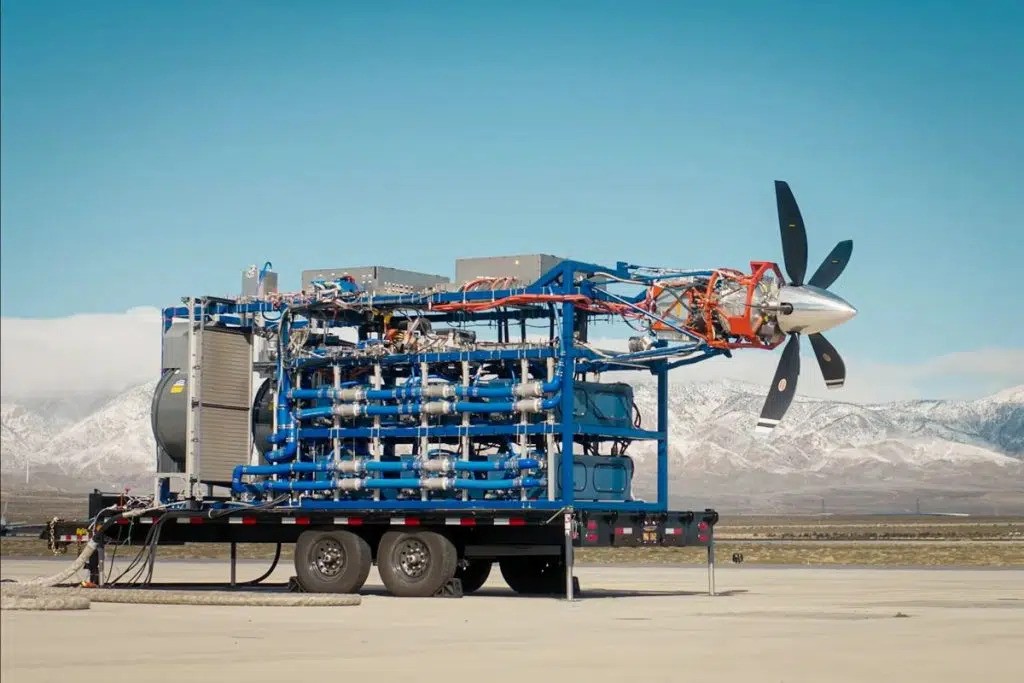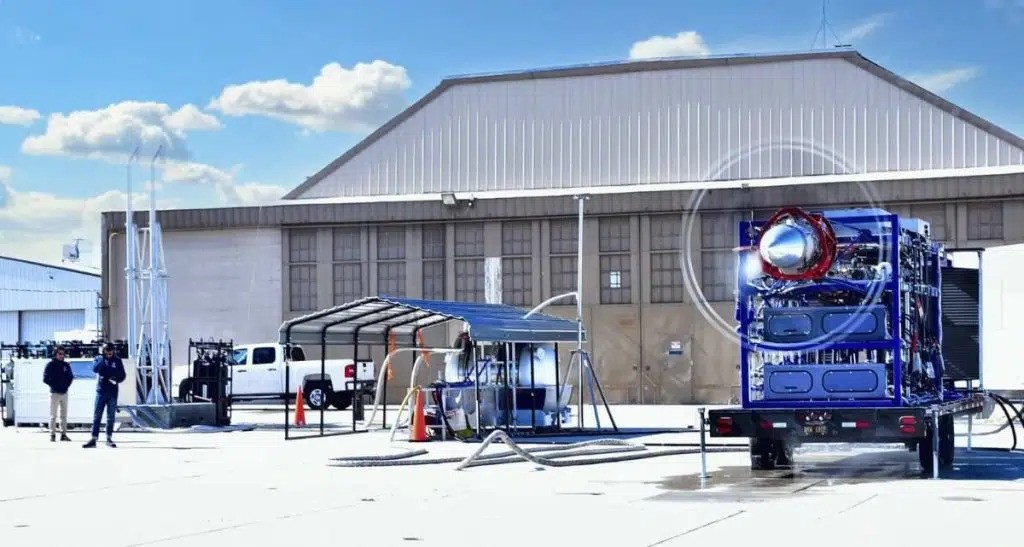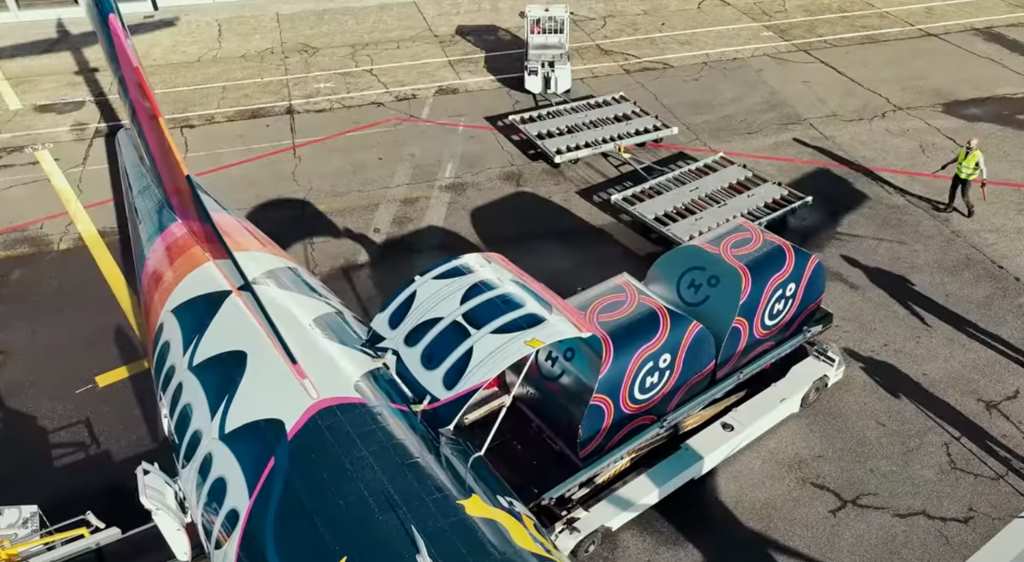
Universal Hydrogen is already flying the world’s largest hydrogen aircraft, and now the company has begun testing interchangeable liquid hydrogen fuel modules that will radically increase the range of clean passenger aircraft operations scheduled for 2026.
Decarbonizing aviation is a challenge; You need to carry a lot of energy in the lightest form possible, and it’s very hard to compete with jet fuel on that metric. Batteries are currently abysmal, so the past few years have seen a furious pace of development in the hydrogen space, usually bringing hydrogen aboard as a compressed gas, then passing it through a fuel cell to power electric propellers.
Gaseous hydrogen could double your plane’s range compared to a battery, and that unlocks short-haul regional flights with zero emissions. Universal is at the absolute forefront here: Last year, the company flew the largest hydrogen fuel cell-powered aircraft ever built, for a long stretch. You can watch Lightning McClean, a converted Dash-8 aircraft, take its first flight in the video below.

Airline operators will need to give up some paid seats to fly this clean way; the Dash-8 can typically carry up to 56 passengers, and this gaseous hydrogen conversion consumes 16 seats. But operating on gaseous hydrogen allows operators to make flights of up to around 740 km of range, and that, Universal says, will cover about 75% of the routes normally served by this class of aircraft.
To go beyond that, you’ll need to upgrade to cryogenic liquid hydrogen. You need to store it at incredibly low temperatures, below 20 K (-253 °C/-423.4 °F) at ambient pressure levels, to keep it in its liquid phase and prevent it from evaporating. If you can handle that, it becomes a matter of how much passenger space you give up, but the potential is there to cover almost every flight this class of aircraft handles on jet fuel.
That’s incredible, but if gaseous hydrogen is at the forefront, liquid hydrogen aviation powertrains are several years behind that, and really only emerging from the research stage. Just last September, H2Fly made the world’s first piloted flight of a liquid hydrogen-powered aircraft, with the remarkable twin-fuselage Pipistrel Taurus shown below.
H2Fly says that moving to liquid H2 has basically doubled the range of the HY4 compared to what it was getting with compressed gas, so the potential here is clear.

Which brings us to now. Universal Hydrogen has been working for some time to build a modular liquid H2 fuel system at a scale relevant to its megawatt-class propulsion system for midsize aircraft such as the Dash-8 and ATR-72.
We’re talking about something that looks externally exactly like a regular air cargo container, which can be filled at a ground facility, then swapped in and out of an aircraft for refueling using the exact same equipment you’d normally load up with cargo. Here’s what it will look like, although the image below shows the gaseous modules used with Lightning McClean.
Each liquid H2 fuel module contains a double-walled vacuum-insulated vessel with a capacity of around 200 kg of liquid hydrogen. Each also has a built-in heat exchange system, which accepts hot coolant from electric propeller engines and uses it to vaporize liquid H2, moving it into a gaseous form that can be run through fuel cells. There are also several evaporative ventilation facilities and leak detection systems for safety, as well as a “leak-proof quick connect” to plug the thing in once you’re on the plane.
Every two of these modules you cram into a converted ATR-72 represents some 926 km of range, plus all the necessary reservations, so airlines will be free to configure their retrofit planes for maximum range, or maximum seats, or something in between.
On Tuesday, Universal announced that it had attached a liquid H2 module to its ground-based testbed “Iron Bird” for the first time, at the Mojave Air and Space Port. Iron Bird is a functional equivalent to Lightning McClean’s propulsion systems, and the team took it through a full flight test profile seamlessly, providing constant power for an hour and 40 minutes. Take a look:
This is the largest fuel cell powertrain ever to run on liquid hydrogen, making it another in a series of ‘firsts’ for Universal Hydrogen.
Mark Cousin
This end-to-end demonstration of a hydrogen molecule moving from our filler/dispenser to our storage module and then to our powertrain is the first time all the pieces of our regional aviation portfolio have come together. The next step is to upgrade our flight test bench to fly the powertrain powered by our modules.
Paul Eremenko.
This achievement represents truly remarkable progress in one of the most challenging and most important decarbonization sectors; Liquid hydrogen airliners offer an incredibly promising way to clean up our skies. Universal aims to have this system ready for commercial passenger flights as soon as 2026.
The other leading startup in this space, ZeroAvia, is now working on taking things to another level. Cryocompressed hydrogen storage will keep the fuel at temperatures close to cryogenic liquids, but it will also add moderate amounts of pressure to the mixture. Many factors come into play, says ZeroAvia, but the end result looks like it could provide a 40% increase in the plane’s range over what liquid H2 can offer.
SOURCE: ecoinventos
Original Article in Spanish:
El Tren Motriz De Hidrógeno Líquido Para Aviones Más Grande Del Mundo Está Listo Para Despegar (ecoinventos.com)
Read the most up to date Fuel Cell and Hydrogen Industry news at FuelCellsWorks




